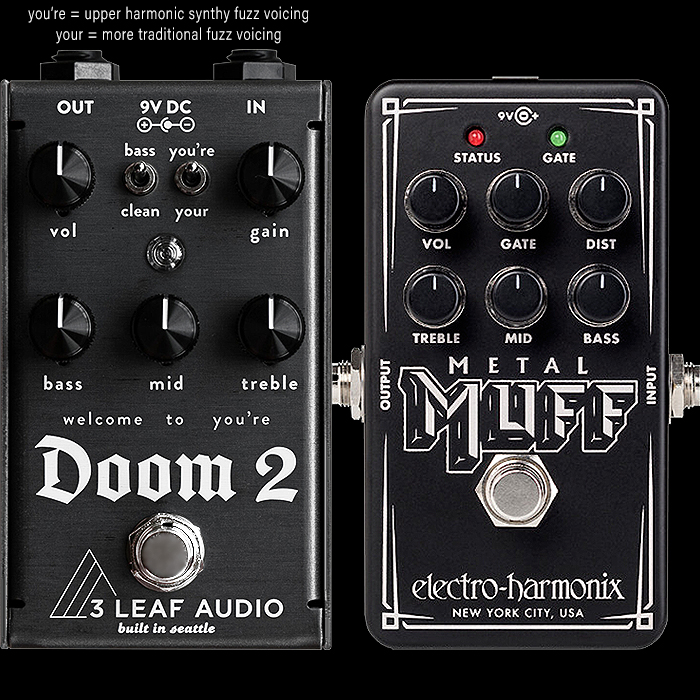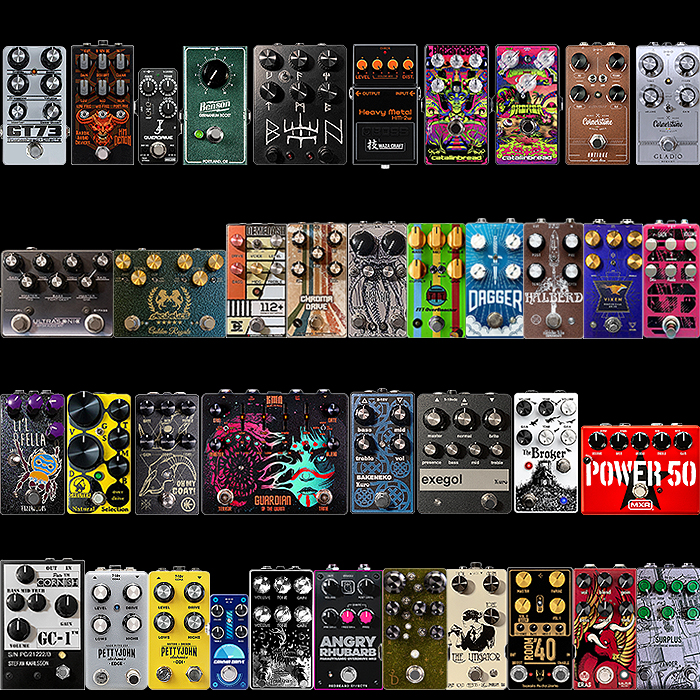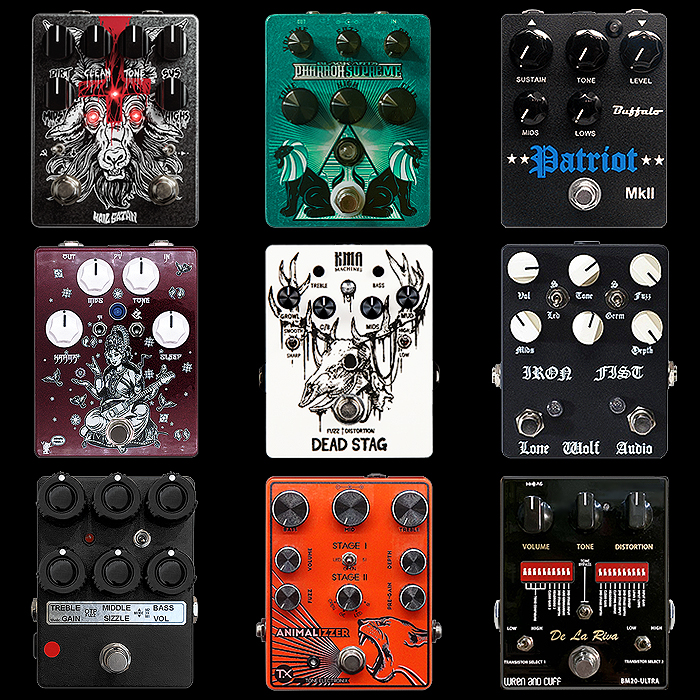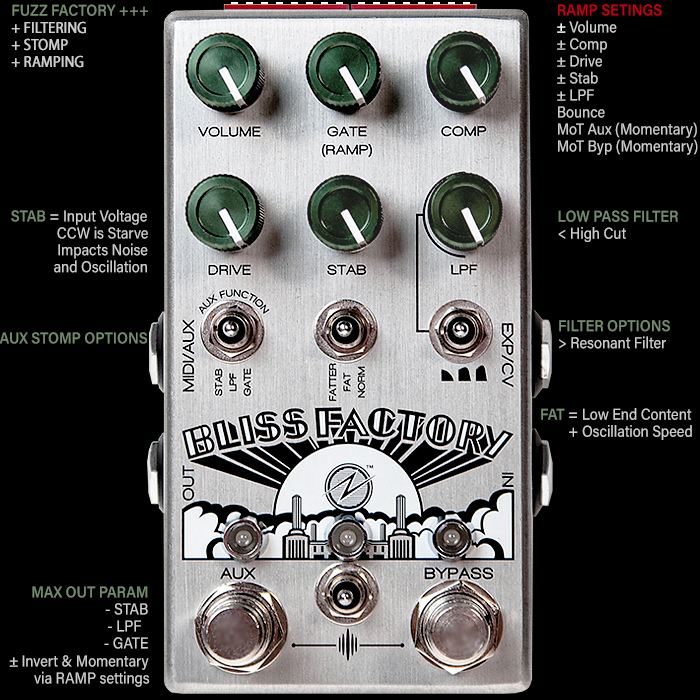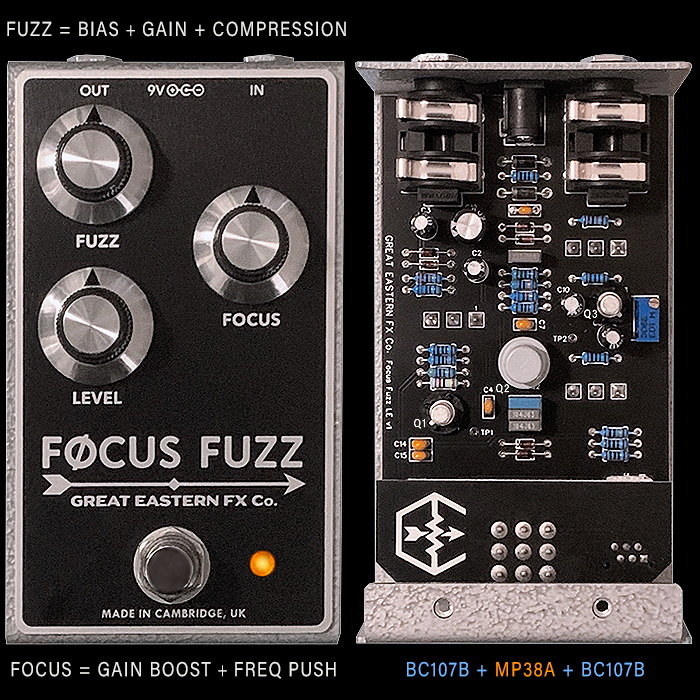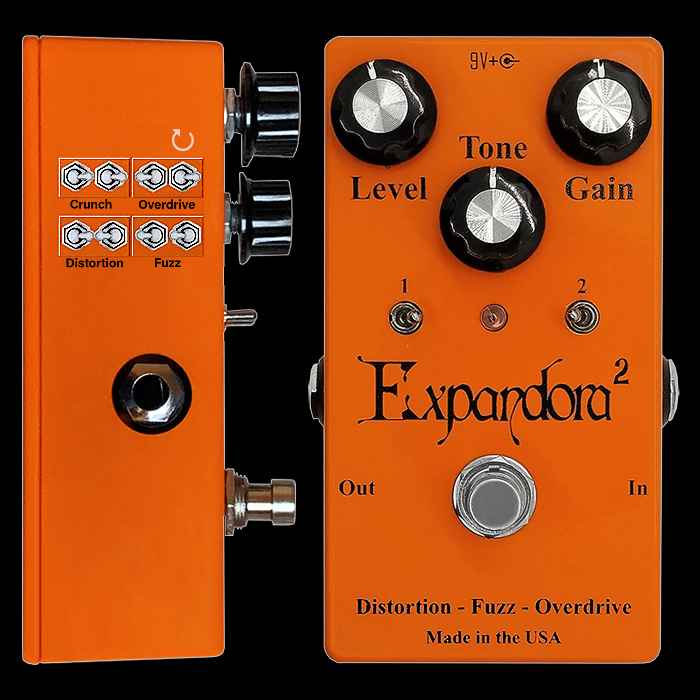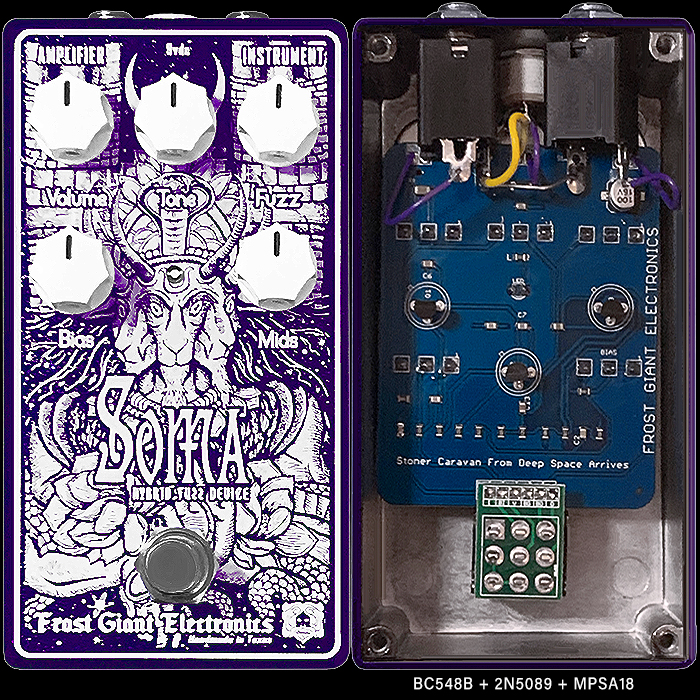Interchange Noise Works' Killer Duo - Element 119 LED Clipping Distortion and On Air 2-in-1 Silicon Fuzz with Independent Boost

I first spotted the On Air Fuzz + Boost when it was in its silver Power Pedals format back in early 2020. An even earlier version of the pedal was showcased by Josh Scott on this JHS Pedal Show YouTube Channel back in October of 2019, as per the below reference, and while I’m pretty sure I watched all those JHS videos from the start - I can’t recall whether that earliest 4-knob version of the On Air registered particularly strongly. For sure the silver 5-knob edition piqued my interest a little later on, and that pedal has been on the wishlist ever since - until its recent acquisition. :
So for sure I clocked the On Air Fuzz first, but caught sight of the Element 119 Distortion not long after. I believe by then Interchange head honcho JJ (Jared Johnson) had teamed up with Leon Wright of Pelican Noiseworks and Squatch Design Co fame - who is responsible for all those really cool carved / etched wooden facias - also seen on 3Leaf Audio, Big Ear and YellowCake pedals.
The core Interchange team consists of JJ - who is the main driving force behind that brand and who originally conceives exactly what kind of pedal is to be built. He then hands over to engineer Brandon Schock - who lives a good 2000 miles away, and who breadboards and prototypes each of those circuits. Eventually producing a PCB, and a final format pedal for JJ - who then finesses the circuit by experimenting and swapping out key components until both are happy with the output and performance of said pedal. JJ is then the one who builds and dispatches those final versions of pedals.
I've become fast friends with JJ over these last few weeks - and we have a number of interests in common, including an education in Marketing. JJ has been very transparent towards me on how Interchange Noise Works operates, and I'm delighted to be in a position to offer these insights on these two great pedals. There are more pedals coming very imminently - and I look forward to sharing those details too at the appropriate time.

As JJ relates - the idea for the 'On Air' originally came about back in 2016 - when he serendipitously made contact with engineer Brandon Schock on Instagram. Those two got on so well that in the shortest time they were collaborating and prototyping the earliest version of the On Air Fuzz - an entirely new variety of fuzz. That edition emerged fully fledged in August of 2018 and was sold under the name of Power Pedals - which is the moniker JJ decided to use for his various earliest builds back then.
Shortly afterwards - in 2019, JJ felt compelled to shut down that business as he was heading off to College, or University as we call it over here! This was just before Josh Scott then had somehow gotten his hands on that earliest On Air Fuzz - and showcased it on the 31st October JHS Pedal Show - per the above video reference.
The 5-knob on air is a pretty distinctive dual-voiced Fuzz - with an additional independent Boost. JJ explains this as rather a 2-in-1 pedal - with two functions versus a Fuzz / Boosted Fuzz. In fact for me the Boost really works best on its own mostly - or combined with lower levels of the fuzz.
The On Air fuzz has a colour-changing / multi-colour LED, and JJ thought it would be cool to create a clipping drive / distortion which for the first time used that specific variety of colour-changing LED, which I don't believe had ever been done before. There are 3 core LED's build into the display of the pedal, and those are also the clipping path for the distortion - so the display lights up dynamically to reflect what's happening in the circuit - and based entirely on your picking technique and degree of attack. It lights up Red for Light clipping, Blue for Medium, and Green for Heavy. But more of that later in the individual pedal details below :
On Air 2-in-1 2-Mode Silicon Fuzz and Independent Boost - $175
I have a feeling that the below Runway Audio feature may have been my first proper exposure to this pedal, while I can't fully recall how I came across that at the time - it does resonate very strongly for me, and is what first properly introduced me to these pedals.
The On Air has 6 controls - Bass, Mode : AM (Lighter) / FM (Heavier), Treble, Signal (Fuzz Level), Statik (Fuzz Gain), and Volume (Boost Level).
It's very much a 2-in-1 pedal with a separate independent Boost, as the Boost only really improves the tone of the Fuzz for me when the Statik control is set fairly low. The Boost works fantastically though with other Drive pedals in particular.
In the Up AM position you're able to get some cool fuzzy-drive sort of tones - where the Fuzz is slightly lighter and more open-pored. I largely prefer the full flavoured and more richly textured Down FM voicing of Fuzz with the controls set to Bass at 3 o'c, Treble at 9 o'c, Signal at Max, and Static at Noon. The fuzz does not tend to oversaturate as much as the Element 119 - so you can fairly freely crank both the Signal and Statik controls.
With my preferred setting you get a gorgeous rich and densely textured fuzz which sounds pretty complex and distinct and with a lot of harmonic detail. There is sufficient degree of cleanup too via your guitar volume knob. All in all a distinct and slightly different sounding fuzz - well worth adding to your collection.
The tone generation is courtesy of 3 Silicon Transistors - 2 x 2N5088 + MPSA13 - which should mean rather Tone Bender in makeup, while it renders rather more like a companion fuzz / super-fuzz - but without the harmonic octave. As a comparison it's slightly more cutting and sharper than the Beetronics Vezzpa in Fuzz mode - which conversely has slightly more low-end by default.
Element 119 Multi-Colour LED Clipping Distortion - $175
The Element 119 in many ways could not have happened without the On Air - as it was that pedal's Colour-changing LED which sparked off the idea for this. Where JJ thought it would be cool to create the first fuzz with a colour-changing Clipping LED.
The Element 119 has 4 simple control - Bass, Treble, Exposure (Output Level), Decay (Clipping Degree / Gain).
Central to the Element 119 are those 3 central LED's where the middle one in particular reacts to your picking and playing dynamics and lights up Red for Light attack, Blue for Medium, and Green for Heavy. The tone generation here is powered by a TL072 OpAmp, and 3 x 2N5088 Silicon Transistors - meaning you get a very fuzz-like distortion character - which I always like to call 'Fuzzstortion'. The output is a wonderful dense and raspy tone - which is again wholly distinct from other distortions - certainly not a Muff or Rat, which might have fairly similar topologies. This is even more its own thing than the On Air - while each is richly textured and distinct in its own way.
My preferred settings here are Bass and Treble at 3 o'c, Exposure at Max, and Decay at around 9 o'c. There is a very high degree of interactivity between the Exposure and Decay Knobs - and if you raise one you usually need to lower the other accordingly. When Exposure is Maxed out - the usable range of Decay is really only from 8 o'c to 11 o'c - as soon after that it starts to oversaturate and get slightly muddy - where you loose much of the definition - there you need to start dialling down the Exposure level.
Final Thoughts


In a world of clones and sound-alikes - both the Element 119 and On Air make for a refreshing alternative. Each is distinctly different, while the Element 119 is possibly a little more unique as I've not really encountered that exact output profile before - that really appealing raspy texture.
For some reason I always saw these as a somewhat matched pair - and I always intended to get both together when I got around to it. After acquiring the equally matched pair of wood facia Big Ear Pedals Loaf Fuzz and Woodcutter Distortion - I was even more set on getting the Interchange pair.
As always it was just a case to getting around to it - after I had dispensed with other priorities and obligations - I look forward to collaborating much more with JJ over the forthcoming months and years. And do note there is a another pedal-launch coming up very soon - we're just waiting for the demo video to be fully finalised - so keep you eyes peeled to this channel!
The Element 119 and On Air are available via Interchange's Webstore and their Reverb.com Store.
How about you dear readers - do either of these two take your fancy - or perhaps you have them already?






















